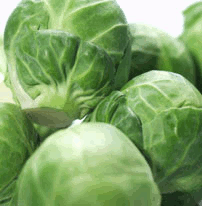Cooking Healthy with Winter Squash
Winter Squash epitomizes the abundance of the fall harvest with its beautiful golden flesh that reflects Nature's autumn colors. Winter squashes are one of the comfort foods that people love to start enjoying when the air begins to chill. There is nothing like a hot bowl of butternut squash or pumpkin soup to bring you into the fall season, not to mention our fondness for the Jack-o-Lantern at Halloween. Not only is winter squash warming and beautiful to behold, it is also packed with carotenoid phytonutrients our bodies can convert into immune-boosting vitamin A-just the nutrient we need in good supply as cold and flu season approaches.
Don't let winter squash's size or the hardness of its shell intimidate you. Cooking winter squash is easy. Here are a few tips:
- Winter squash is easily prone to decay, which shows up as water-soaked or moldy areas, so inspect it carefully before purchase.
- Choose squash that are firm, heavy for their size and have dull, not glossy, rinds. The rind should be hard; a soft rind may indicate a squash that is watery and lacking in flavor.
- After washing winter squash, cut it in half and remove the seeds and fibrous material in the cavity. Depending upon the recipe preparation, you can either use it peeled or unpeeled.
- We have an easy to follow animation on how to peel and cube Butternut Squash for steaming, or braising with other fall and winter ingredients. Just click In-Home Cooking Demo, and you'll see Winter Squash in the alphabetized list. This is a good way to cook this squash for various applications, such as soups, as a side dish tossed with your favorite flavored sauce, as preparation for mashing or as a flavorful ingredient in stews.
- Acorn, Hubbard and Kabocha Squash are also wonderful baked or "slow roasted." To bake: leave the squash whole and pierce near the stem with the tip of a paring knife-this will allow any steam to escape-then bake in a 350°F oven for 45 minutes to an hour, until a knife can be easily inserted near the stem. As you would before carving a pumpkin, cut out a small circle around the stem, remove this piece from the squash, and scoop out the seeds and fibrous material in the cavity. To slow roast: cut squash in half, remove seeds, place cut side down in a baking dish and bake at 350°F for 45 minutes.
- Don't toss the seeds! Seeds from all varieties of Winter Squash are edible and delicious after they have been roasted. Simply pre-heat the oven to 170°F, spread the seeds out in a thin layer on a cookie sheet and roast 15-20 minutes. For extra flavor, toss the seeds with a little tamari (soy sauce) before roasting.
Here is one of my favorite soup recipes featuring Winter Squash: Golden Squash Soup.






